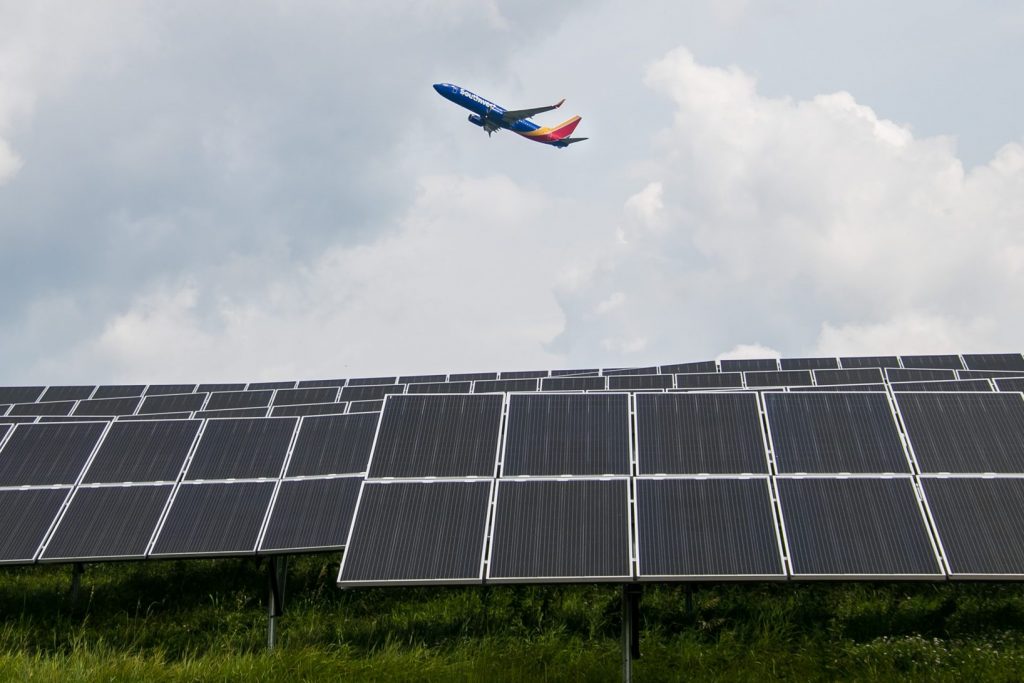Skift Take
The pandemic and the push for sustainability are forcing airports to think outside of the box. The more creative, the bigger the win, it seems. But are some of these revenue-generating ideas here for the long run or only until travel recovers?
Pittsburgh international airport recently became an island to itself by going off the grid and installing micro-grids, powered by natural gas at its airport campus in its quest to generate its electricity —and to set an example for the industry.
The move to self-powering the Pittsburgh airport ensures resiliency, lowers costs, and improves its sustainability footprint, Christina Cassotis, CEO of Allegheny County Airport Authority, told Skift in a 2019 interview about the rise of small airports.
This is just one of several projects, including a buildout for a new airport slated to open in 2025, that the western Pennsylvania airport is working on to diversify its revenue.
Pittsburgh airport and the University of Pittsburg developed “Neighborhood 91,” an additive manufacturing production campus program at the airport’s innovation campus. The developments connect and condense all components of the 3D printing and additive manufacturing supply chain into one production ecosystem.
Already companies are moving operations to Neighborhood 91. Wabtec Corporation, a global provider of value-added services, equipment, digital solutions, and systems to transit rails and freight, is leasing more than 11,000 square feet at the neighborhood.
Will other airports follow Pittsburgh’s lead in diversifying revenue streams?
In California’s Humboldt county where roads are often closed due to mudslides and wildfires, construction for the state’s first multi-customer micro-grid has commenced at the California Redwood Coast — Humboldt County Airport. The $11.6 million project is being funded by two separate state agencies and is projected to be operational in November, according to the Schatz Center, the prime contractor of this project.
While San Diego airport isn’t considering implementing a true micro-grid, the airport has implemented a 12k energy distribution loop to power all airport facilities while reducing its consumption and energy costs. It also recently switched to 100 percent renewable and 100 percent carbon-free energy to cut costs through the non-profit San Diego Community.
“We’re anticipating a cost savings of about $700,000 when compared to the estimated fiscal year 2022 budget for San Diego Gas and Electric’s EcoChoice program,” an airport spokesperson said.
Additionally, San Diego airport has an airport innovation lab providing businesses interested in serving the aviation industry an opportunity to develop business models and test solutions best suited for an airport environment.
By working with various companies through its airport innovation lab in developing new services and amenities to enhance the customer experience, San Diego airport believe it will lead to revenue-generating opportunities, she said.
For instance, given the significant impacts Covid-19 has had around the world, there is a demand from passengers for touchless and contactless operations, the airport is working with a cohort in finding solutions to enhance the touchless journey or advance queue management.
“By implementing solutions that make the passenger experience as seamless as possible we have the opportunity for financial, environmental, and safety gains,” said the San Diego airport spokesperson.
In support of its terminal concessions, the Orange County airport launched the OC AirPass program, to allow non-ticketed passengers the opportunity to shop to go past security as was the case before 9/11 to eat or shop.
Orange County airport said it developed a “cocktails, beer, and wine to-go” program allowing guests to take their beverage purchases to seating areas in the terminal.
The program supports restaurants with revenue while allowing for physical distancing and less crowding in restaurants, the Orange County airport spokesperson said.
The Southern California airport also introduced a new program of contactless food ordering with gate delivery, eliminating touchpoints through the use of mobile apps to order, pay, and have the meal delivered to the passenger’s gate, she said.
In South Carolina, the Horry County Department of Airports has implemented several land-use initiatives resulting in revenue diversification and effective land uses at Myrtle Beach International airport.
For instance, after acquiring a former golf course within the runway protection zone of Runway 36, the county hired a golf management company to oversee the day to day operations and Myrtle Beach airport collects a small percentage of the revenue generated by management’s company for operating the Aero Club course, he said.
Another way, the Myrtle Beach airport has been generating revenue is through a 2019 partnership with Santee Cooper, a local utility company to develop a solar generation facility on an existing landfill site located on airport property. The Horry County Department of airports said the agreement is in the form of a land lease, based on the fair market value of the property.
Wichita airport said it has an advantage for revenue sourcing that most other airports do not.
And that is facilities, the spokesperson said. While many airports own the land, but not the facilities and are limited to sourcing revenue only from the land, Wichita airport owns both.
That advantage increases the potential of significant revenue generation when leases reach the end of the no-facility-rent-period which varies based on several factors including the tenant’s prior investment in constructing the facility, she said.
In Connecticut, Bradley airport’s main source of non-aeronautical revenue comes from the airport’s parking operation and concession partners.
The airport is always seeking opportunities to diversify its overall revenue streams. But, over the past year some of the focus has been on finding how to possibly enhance or alter the non-aeronautical related services to drive additional revenue, a Bradley airport spokesperson said.
The Daily Newsletter
Our daily coverage of the global travel industry. Written by editors and analysts from across Skift’s brands.
Have a confidential tip for Skift? Get in touch
Tags: airports, climate change, coronavirus recovery, revenue, sustainability
Photo credit: A plane flies over microgrids powering the entire campus at Pittsburgh International airport. Pittsburgh International Airport / Skift
